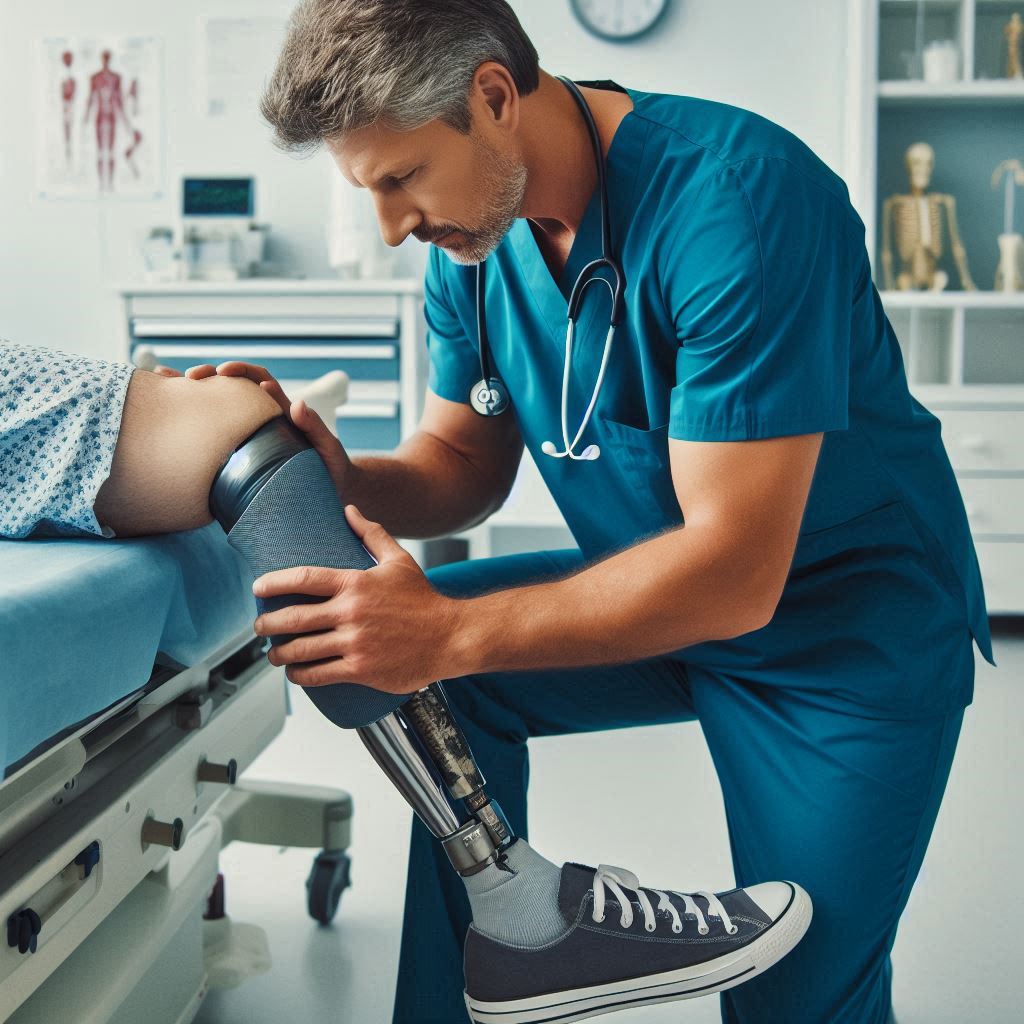Introduction
In this blog post, we will explore Comparing Nuclear Medicine Program.
Nuclear medicine programs play a crucial role in the healthcare industry. They train professionals to use radioactive materials for diagnosis and treatment.
These programs ensure that technologists understand complex imaging techniques and patient care.
The importance of nuclear medicine programs has grown with advancements in medical technology.
They equip students with the skills needed for accurate diagnosis and effective treatment.
The demand for nuclear medicine technologists is increasing rapidly. As the population ages, the need for diagnostic imaging grows.
Technologists are essential for early detection and treatment of diseases.
Their expertise in imaging technology helps in precise diagnosis, which is vital for patient outcomes.
Nuclear medicine technologists operate sophisticated equipment and ensure patient safety during procedures.
Healthcare providers recognize the value of well-trained technologists. This recognition has led to more investment in nuclear medicine programs.
Graduates of these programs are in high demand across various medical settings.
Hospitals, clinics, and research facilities seek skilled technologists for their expertise.
Nuclear medicine programs also emphasize hands-on experience. Clinical internships and lab work prepare students for real-world scenarios.
This practical training is essential for developing proficiency in the field. As a result, graduates are ready to meet the challenges of modern healthcare.
In essence, nuclear medicine programs are vital in today’s healthcare landscape. They address the increasing demand for skilled technologists.
These programs ensure that professionals are well-equipped to provide high-quality patient care.
The growing need for nuclear medicine technologists highlights the importance of these educational programs.
Program Accreditation
Significance of accreditation from organizations like JRCNMT and ARRT
Accreditation from organizations like JRCNMT (Joint Review Committee on Educational Programs in Nuclear Medicine Technology) and ARRT (American Registry of Radiologic Technologists) is crucial in ensuring that nuclear medicine programs meet specific standards of quality and excellence.
Accreditation from these reputable organizations signifies that the program has undergone a rigorous evaluation process and has met or exceeded established criteria for educational quality, program effectiveness, and student outcomes.
This accreditation ensures that graduates are well-prepared to enter the workforce and provide high-quality patient care in the field of nuclear medicine.
Transform Your Career Today
Unlock a personalized career strategy that drives real results. Get tailored advice and a roadmap designed just for you.
Start NowIt also demonstrates to employers, licensing bodies, and professional organizations that the program meets industry standards and produces competent professionals who can contribute effectively to the field.
Different programs based on accreditation status
When comparing nuclear medicine programs, it is essential to consider their accreditation status from organizations like JRCNMT and ARRT.
Programs that are accredited by these organizations have demonstrated a commitment to excellence in education and have undergone a comprehensive evaluation to ensure that they meet rigorous standards.
Accredited programs are more likely to provide a high-quality education that prepares students for successful careers in nuclear medicine.
On the other hand, programs that are not accredited may not meet the same level of quality and may not provide the same opportunities for graduates.
By choosing an accredited program, students can be confident that they are receiving a reputable education that meets industry standards and prepares them for success in the field.
Read: Patient Interaction Tips for Nuclear Medicine Techs
Curriculum
When comparing nuclear medicine programs, one of the key aspects to consider is the curriculum.
The coursework and clinical training included in these programs play a crucial role in shaping the education and training of future nuclear medicine technologists.
Typical coursework and clinical training included in nuclear medicine programs
Typical coursework in nuclear medicine programs covers a range of subjects, including anatomy, physiology, radiation physics, and nuclear medicine procedures.
Students also learn about radiopharmaceuticals, radiation safety, patient care, instrumentation, and quality control in these programs.
Clinical training is a vital component of nuclear medicine programs, where students gain hands-on experience in imaging procedures and patient care.
Through clinical rotations, students work alongside experienced technologists in hospitals, clinics, and imaging centers to apply their knowledge in real-world settings.
This practical training helps students develop essential skills in performing diagnostic tests, interpreting results, and ensuring patient safety.
Curriculum of different programs to determine the depth and breadth of education offered
When comparing nuclear medicine programs, it is important to assess the depth and breadth of the curriculum offered by different institutions.
Some programs may focus more on the technical aspects of nuclear medicine, while others prioritize clinical experience and patient care.
Programs with a comprehensive curriculum that covers both theoretical knowledge and practical skills provide students with a well-rounded education.
Look for programs that offer advanced coursework in specialized areas such as PET/CT imaging, radiopharmacy, or research methodologies.
Consider the opportunities for hands-on training, research projects, and internships available to students to enhance their learning experience.
Showcase Your Business Today
Reach thousands of readers actively exploring professional services. Publish your business profile and grow your audience now.
Publish NowBy comparing the curriculum of different nuclear medicine programs, aspiring technologists can make informed decisions about their education and training to pursue a fulfilling career in the field.
Read: Impact of Nuclear Medicine Techs in Healthcare
Clinical Rotations
Hands-on experience in clinical settings is crucial for nuclear medicine students to apply their knowledge effectively.
Importance of Hands-on Experience
- Allows students to practice real-world scenarios
- Enhances skills in patient care and communication
- Provides exposure to various imaging and diagnostic procedures
- Builds confidence and competence in handling nuclear medicine equipment
Availability and Quality of Clinical Rotation Opportunities
When comparing nuclear medicine programs, it is essential to assess the availability and quality of clinical rotation opportunities offered by each program.
Some programs may have affiliations with prestigious hospitals and medical centers, providing students with a diverse and challenging clinical experience.
Quality of preceptors and mentors in clinical settings can greatly impact the learning experience of students.
Programs with experienced and knowledgeable professionals can offer valuable guidance and support.
Variety of clinical settings, such as hospitals, imaging centers, and research facilities, can expose students to different aspects of nuclear medicine practice and help them explore various career paths within the field.
Opportunities for hands-on practice with advanced imaging technologies and equipment can give students a competitive edge in their training and preparation for future employment.
Ultimately, the availability and quality of clinical rotation opportunities in a nuclear medicine program can significantly shape the educational experience of students and prepare them for successful careers in the field.
When evaluating programs, prospective students should consider the types of clinical settings available, the expertise of preceptors, and the opportunities for hands-on training to make an informed decision about their education and professional development.
Read: Navigating Job Market as a Nuclear Medicine Technologist

Faculty Qualifications
Impact of knowledgeable and experienced faculty on students’ learning
The impact of knowledgeable and experienced faculty on students’ learning cannot be overstated.
Students benefit greatly from faculty members who have practical experience in the field.
Look for faculty members with advanced degrees in nuclear medicine or related disciplines.
Consider the years of experience each faculty member brings to the program.
Check if faculty members are actively involved in research or professional organizations.
Qualifications and credentials of faculty members in various programs
Teaching credentials such as certifications or awards can indicate dedication to excellence.
Seek out programs where faculty members have a strong track record of student success.
Faculty who stay current with industry trends can provide valuable insights to students.
The diversity of faculty backgrounds can offer a well-rounded and comprehensive educational experience.
Compare faculty-to-student ratios across programs to ensure personalized attention and support.
Read: Ethical Considerations for Nuclear Medicine Techs
Facilities and Equipment
Significance of access to state-of-the-art facilities and equipment for practical training
Access to state-of-the-art facilities and equipment is crucial for practical training in nuclear medicine programs.
Students need hands-on experience with cutting-edge technology to prepare them for real-world scenarios.
Resources and technology available in different programs
Different programs offer varying resources and technology for students.
Some may have partnerships with research institutions or hospitals, providing access to advanced imaging equipment.
State-of-the-art facilities can include PET/CT scanners, SPECT cameras, and gamma cameras.
These tools are essential for students to learn how to operate and interpret imaging results.
Compare the availability of simulation labs in different programs.
These labs mimic real clinical settings and allow students to practice using equipment in a controlled environment.
Look for programs that offer hands-on training opportunities at clinical sites.
This practical experience is invaluable for students to apply their knowledge in a professional setting.
Consider the size and quality of laboratories in each program.
Adequate lab space is necessary for students to conduct experiments, analyze data, and collaborate with peers.
It’s essential to choose a program that provides access to top-notch facilities and equipment to ensure a well-rounded education in nuclear medicine.
By comparing the resources and technology available in different programs, students can make an informed decision about their educational journey.
Job Placement Rates
Job placement rates are a crucial factor to consider when evaluating nuclear medicine programs.
High job placement rates indicate the effectiveness of a program in preparing graduates for employment in the field.
Importance of high job placement rates for program graduates
Here are some reasons why high job placement rates are important:
Showcase Your Business Today
Reach thousands of readers actively exploring professional services. Publish your business profile and grow your audience now.
Publish Now- Reflects program quality: Programs with high job placement rates demonstrate that they are providing students with the necessary skills and training to succeed in the job market.
- Confirms employer demand: A program with high job placement rates suggests that employers value the education and training received by graduates, leading to increased demand for program alumni.
- Boosts confidence: Knowing that a program has a history of successfully placing graduates in jobs can boost students’ confidence in their own career prospects upon completion of the program.
Comparing Job Placement Rates
When comparing job placement rates of different nuclear medicine programs, it is essential to look at the following aspects:
- Overall placement rate: Compare the overall percentage of graduates who secured jobs within a certain timeframe after completing the program.
- Specialization placements: Some programs may have higher placement rates for specific specializations within nuclear medicine.
Consider how these align with your career goals. - Employer partnerships: Programs with strong relationships with industry partners often have higher job placement rates due to increased opportunities for internships and job placements.
- Geographic location: Job placement rates can vary based on the location of the program.
Consider programs in areas with a high demand for nuclear medicine professionals. - Alumni network: Programs with a strong alumni network may offer better job placement support through networking opportunities and job referrals.
By comparing job placement rates of different nuclear medicine programs and considering these factors, you can make an informed decision about which program best aligns with your career goals and aspirations.
Conclusion
We’ve highlighted the essential factors when comparing nuclear medicine programs. Accreditation ensures a program meets high standards of education.
Clinical training opportunities provide hands-on experience, crucial for practical skills development.
Program length and structure influence your learning pace and schedule flexibility.
Cost and financial aid options vary, affecting your financial planning and burden. The location of the program impacts your living conditions and daily commute.
Faculty qualifications and experience enhance the learning environment and educational quality.
Alumni success rates give insights into the program’s effectiveness and industry reputation.
Thoroughly researching and comparing these aspects ensures you make an informed decision.
Visit program websites, attend open houses, and speak with current students and alumni.
Utilize online resources and forums to gather diverse opinions and experiences.
Making a well-informed choice impacts your future career and job satisfaction.
A comprehensive comparison helps you find a program that fits your personal and professional goals.
Invest time in this crucial step to ensure a rewarding educational journey in nuclear medicine.
Remember, each program has unique strengths and potential drawbacks. Identify what aligns best with your aspirations and circumstances.
By doing your due diligence, you maximize your chances of success in this specialized field.
Start your research today and take the first step towards a promising career in nuclear medicine.
Your future in healthcare depends on the choices you make now. Choose wisely and pursue your passion with confidence.
[E-Books for Sale]
The Big Book of 500 High-Paying Jobs in America: Unlock Your Earning Potential
$19.99 • 500 High-Paying Jobs • 330 pages
Explore 500 high-paying jobs in America and learn how to boost your career, earn more, and achieve success!
See All 500 High-Paying Jobs of this E-Book
1001 Professions Without a Degree: High-Paying American Jobs You Can Start Now
$19.99 • 1001 Professions Without a Degree • 174 pages
Discover 1001 high-paying jobs without a degree! Unlock career tips, skills, and success strategies for just $19.99!




